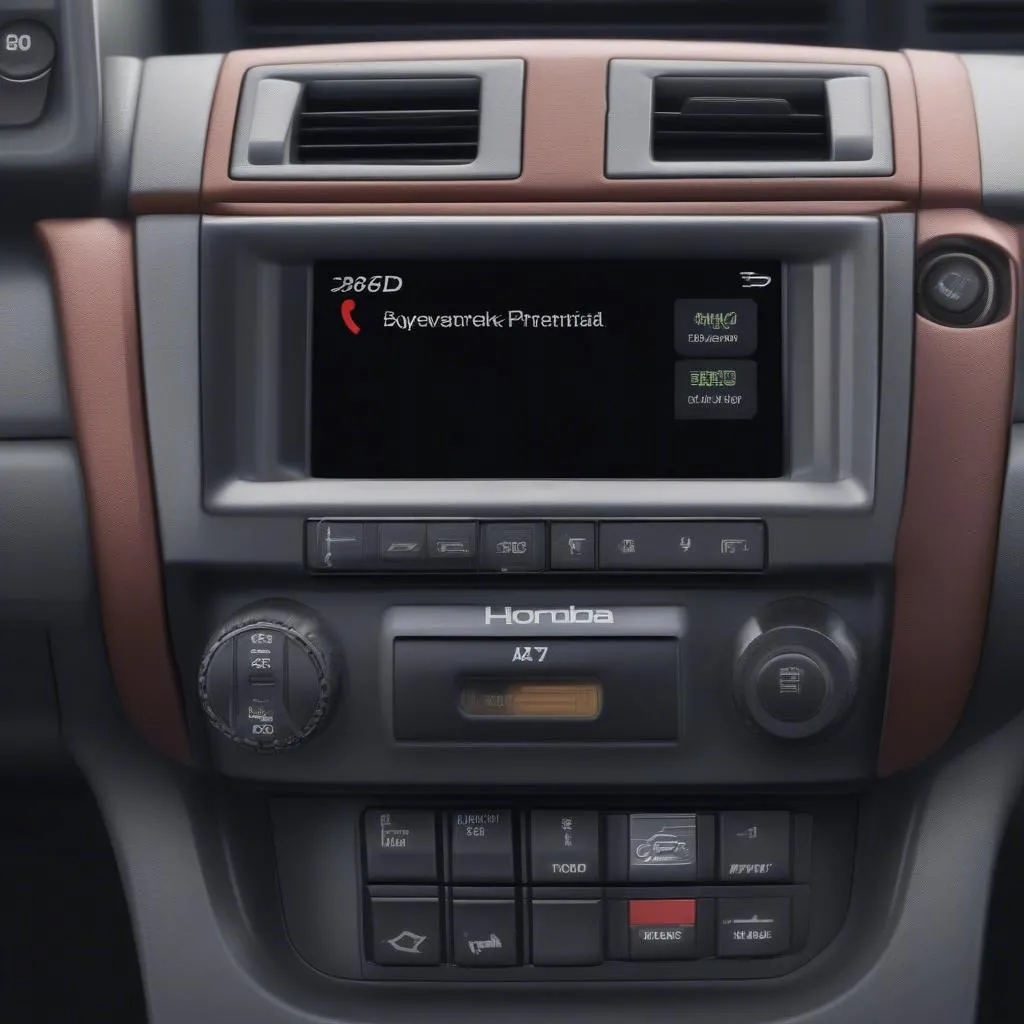Have you ever been in a situation where your Honda CR-V started acting up? Maybe the engine light came on, or the car just wasn’t running as smoothly as it used to. You know that it’s time to get a diagnosis, but you’re not sure where to start. Finding the OBD port is your first step, and we’re here to help!
Why Finding the OBD Port is Important
The OBD (On-Board Diagnostics) port is a gateway to your car’s computer system. It’s a standardized connector that allows mechanics, enthusiasts, and even DIYers to access valuable information about your car’s performance. Through the OBD port, you can:
Understanding the OBD Port from a Mechanic’s Perspective
Imagine yourself as a mechanic. You’re faced with a Honda CR-V that’s experiencing problems. The first thing you do is plug in a diagnostic scanner to gather information about what’s happening under the hood. The OBD port is the critical connection that provides the key to understanding the car’s health.
The Technical Side of the OBD Port
From a technical standpoint, the OBD port allows you to communicate with the car’s Electronic Control Unit (ECU). This is the car’s brain, which manages everything from fuel injection to emissions control. By connecting a scanner to the OBD port, you can read diagnostic trouble codes (DTCs) that pinpoint the issue.
The Importance of OBD for Car Owners
For car owners, the OBD port offers peace of mind and potentially saves you money. You can use a scanner to monitor your car’s performance, identify potential problems early on, and avoid costly repairs down the road.
Where is the OBD Port Located on a 2000 Honda CR-V?
The OBD port on a 2000 Honda CR-V is typically located under the dashboard, on the driver’s side. Look for a 16-pin connector that’s often covered by a small flap or a rubber cover.
Here’s a step-by-step guide to help you find it:
-
Enter Your Car: Get into the driver’s seat of your 2000 Honda CR-V.
-
Look Under the Dashboard: Turn your head towards the driver’s side of the dashboard, just below the steering wheel.
-
Search for a Small Flap or Cover: Pay attention to the area where the steering column meets the dashboard. You should see a small flap or a rubber cover, usually in black or gray, that might be hiding the connector.
-
Open the Flap: Gently pull open the flap or cover.
-
Find the 16-Pin Connector: You’ll find the OBD port beneath the flap. It’s a rectangular connector with 16 pins.
 Honda CR-V OBD port
Honda CR-V OBD port
Frequently Asked Questions (FAQs)
Q: Can I use any scanner to read my Honda CR-V’s OBD port?
A: While most OBD-II scanners will work, some scanners are specifically designed for certain car makes and models. It’s best to consult a mechanic or an online resource to find a compatible scanner for your 2000 Honda CR-V.
Q: What if I can’t find the OBD port?
A: If you’re having trouble finding the OBD port, it’s a good idea to check your car’s owner’s manual. The manual should have a diagram showing the exact location of the OBD port. If you’re still having trouble, contact your local mechanic for help.
Q: What kind of information can I get from the OBD port?
A: The OBD port provides access to a wide range of information about your car’s health, including:
-
Diagnostic Trouble Codes (DTCs): These codes indicate specific issues that your car is experiencing.
-
Engine Data: This includes information like engine speed, fuel pressure, and air-fuel ratio.
-
Emissions Data: The OBD port can also access emissions data, such as oxygen sensor readings and catalytic converter status.
Q: Can I reset my car’s computer through the OBD port?
A: Yes, you can reset your car’s computer, also known as clearing the codes, through the OBD port. This can be helpful for diagnosing certain issues or resetting the car’s system after a repair.
Q: Do I need to be a mechanic to use an OBD scanner?
A: Not necessarily. There are many user-friendly OBD scanners available on the market. Some scanners even come with apps that provide easy-to-understand explanations of the diagnostic codes and other data.
Learn More About OBD and Your Car
There’s a lot more to learn about OBD and how it can help you maintain and diagnose your Honda CR-V. Check out our other articles on our website for more in-depth information:
-
[Link to: https://techcarusa.com/2000-honda-crv-obd-port-location/] 2000 Honda CR-V OBD Port Location
-
[Link to: https://techcarusa.com/location-of-obd-port-on-a-2002-honda-civic-ex/] Location of OBD Port on a 2002 Honda Civic EX
-
[Link to: https://techcarusa.com/honda-s2000-obd-ii-connector-site-youtube-com/] Honda S2000 OBD II Connector
-
[Link to: https://techcarusa.com/2000-grand-am-obd-location/] 2000 Grand Am OBD Location
-
[Link to: https://techcarusa.com/best-place-to-buy-obd-scanner/] Best Place to Buy OBD Scanner
Connect with Us for Expert Support
If you’re struggling with finding your OBD port or have any questions about using a diagnostic scanner, don’t hesitate to reach out! We’re here to help!
Contact us on WhatsApp: +84767531508 for 24/7 support.
Let’s get your Honda CR-V running smoothly again!